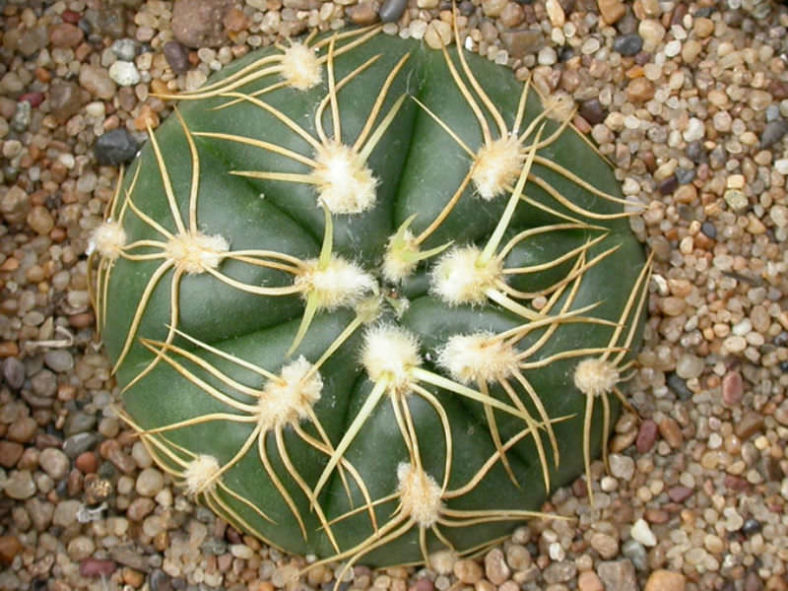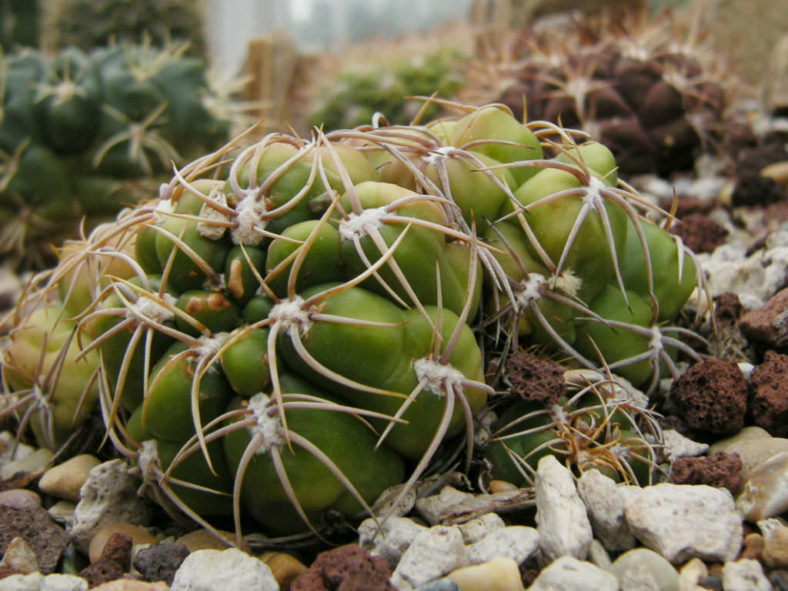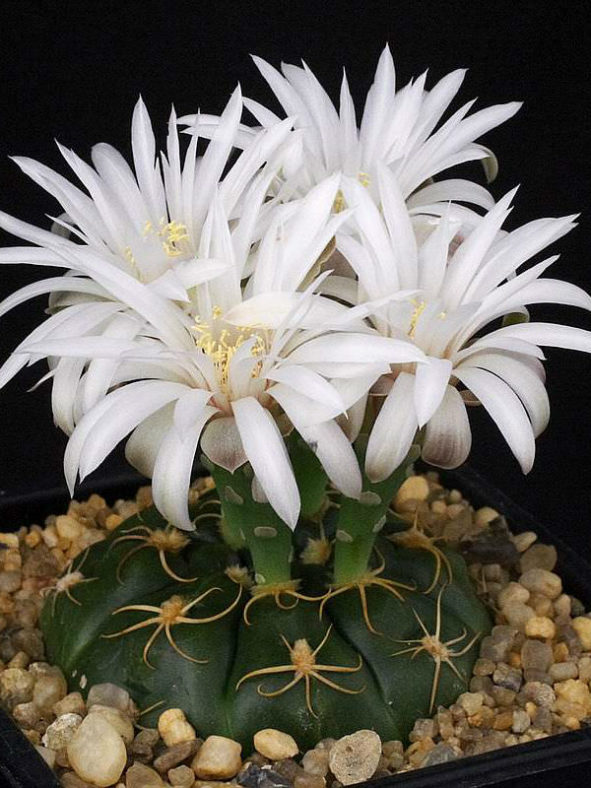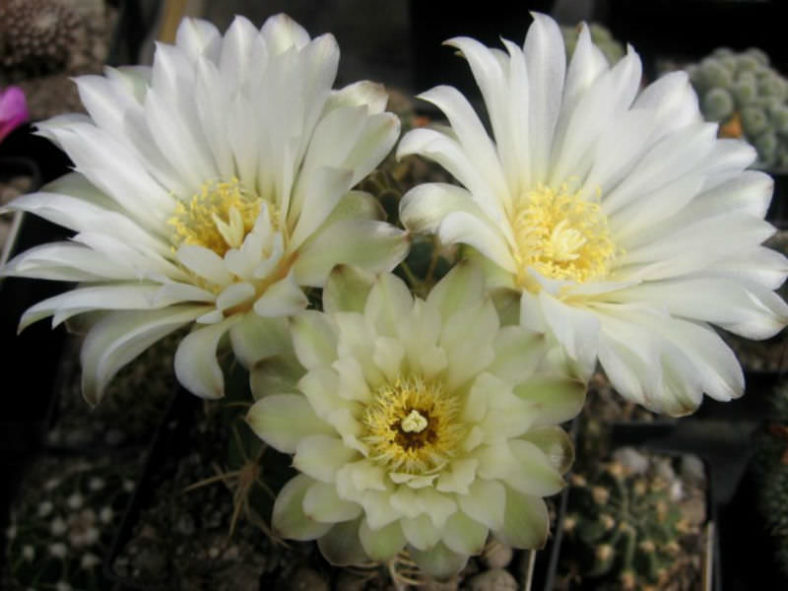Scientific Name
Gymnocalycium denudatum (Link & Otto) Pfeiff. ex Mittler
Common Name(s)
Spider Cactus
Synonym(s)
Echinocactus denudatus
Scientific Classification
Family: Cactaceae
Subfamily: Cactoideae
Tribe: Trichocereeae
Genus: Gymnocalycium
Etymology
The specific epithet "denudatum" (pronounced "dee-noo-DAY-tum") means "denuded, uncovered" and refers to the relatively bare, smooth, and lightly spined stem of this species.
Origin
Gymnocalycium denudatum is native to Brazil (Rio Grande do Sul), Uruguay (Melo), and probably Paraguay.
Description
Gymnocalycium denudatum is a small cactus with a dark green, spherical, usually solitary stem with 5 to 8 ribs with low tubercles, hardly apparent, and areoles with clusters of spines often hugging the stem contour and looking like long-legged spiders. The stem can grow up to 1.2 inches (3 cm) tall and 3.2 inches (8 cm) in diameter, or a little taller in cultivation. The spines are all radial, usually 3 to 5 per areole, and range in color from ivory white to pale creamy yellow, reaching lengths of up to 0.8 inches (2 cm).
The flowers are white, appear in spring and summer, and can reach a length of 2 inches (5 cm) and a diameter of 3 inches (7.5 cm). The fruits are oblong and green.

Hardiness
USDA hardiness zones 9b to 11b: from 25°F (-3.9°C) to 5°F (10°C).
How to Grow and Care
Some Gymnocalyciums are shade-seeking in the wild, growing among shrubs or grasses, while others thrive in complete exposure. Therefore, some plants will require light shading from the sun in the hottest months, but overexposure can result in the loss of flowers.
The potting medium's balance should be sufficient to allow good drainage so that the plants do not sit in soggy soil for more than a day or two after watering.
Watering in the summer months, while the plants are growing well, can be frequent (weekly for small plants in small pots), but always allow the compost to dry out nearly before rewatering. Watering in the winter months is unwise and unnecessary. The difficult times are spring and autumn.
Species that produce offsets can be readily propagated by cuttings. Gymnocalycium seeds germinate well when fresh and can be stored for a few years in cold conditions.
See more at How to Grow and Care for Gymnocalycium.
Links
- Back to genus Gymnocalycium
- Succupedia: Browse succulents by Scientific Name, Common Name, Genus, Family, USDA Hardiness Zone, Origin, or cacti by Genus
Photo Gallery
Click on a photo to see a larger version.


